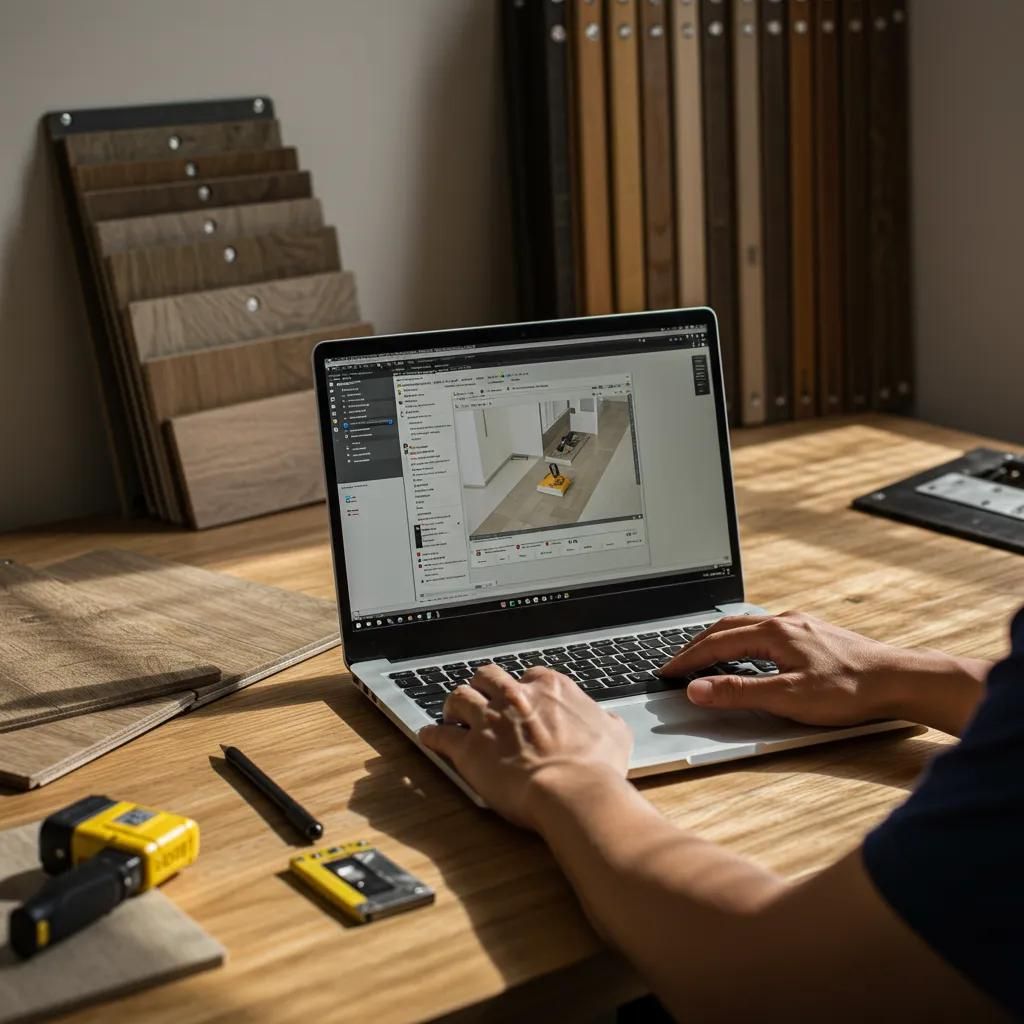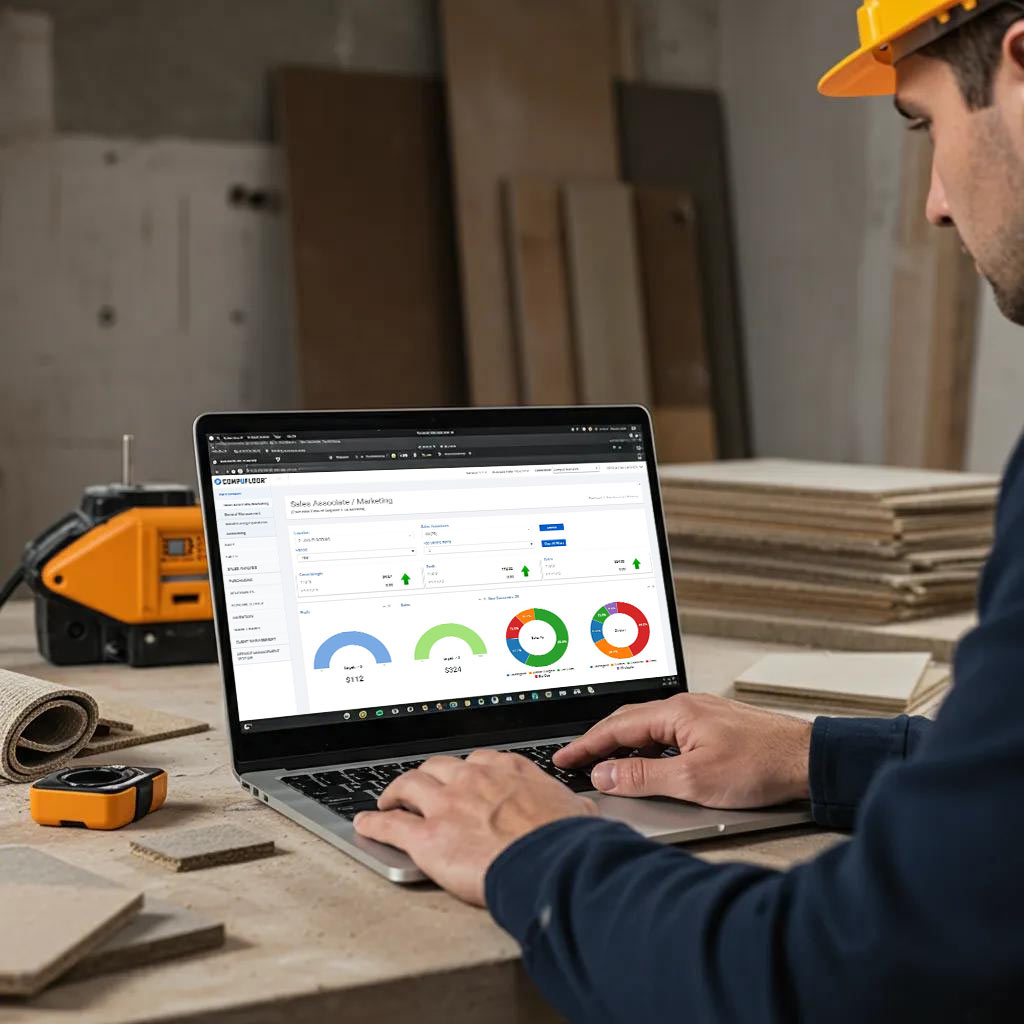Measuring Returns: Investing in Flooring Estimating Software

Discover How Flooring Estimating Software Delivers Measurable Return on Investment
Can I expect a return on investment from purchasing flooring estimating software? Return on Investment for Flooring Estimating Software represents the financial gain generated by efficiency improvements, cost reductions, and accuracy enhancements. This analysis explains what ROI entails, how to calculate it, and which metrics matter most. It then examines efficiency gains, accuracy improvements, cost savings, and real-world case studies to show how flooring contractors translate software investment into measurable returns.
What Is Return on Investment for Flooring Estimating Software?
Return on Investment (ROI) for Flooring Estimating Software quantifies the ratio of net financial benefits to total expenditures on the solution. Measuring ROI involves comparing cost savings achieved through precise take-offs, time-saving automation, and error reduction against software acquisition, implementation, and operating costs. An accurate ROI assessment informs purchase decisions and prioritizes high-impact features.
Key components of flooring software ROI include:
- Investment outlays covering licensing fees, integration, and training
- Efficiency gains from automated take-offs, bid generation, and reporting
- Cost savings through reduced material waste, rework avoidance, and labor optimization
By focusing on these elements, contractors can forecast payback periods and prioritize software-driven improvements.
How Do You Calculate ROI for Flooring Estimating Software?

ROI calculation follows a simple formula:
The following table provides common ROI metrics used to quantify software benefits:
These metrics guide flooring businesses in evaluating their investment performance.
What Investment Costs Are Included in Flooring Software ROI?
Core investment costs encompass initial licensing or subscription fees, customization and integration expenses, and user training or support. Implementation costs may also include hardware upgrades or third-party connector fees. Contractors should account for annual maintenance, software updates, and potential user support contracts when calculating total outlay.
In the competitive landscape of flooring software solutions, Comp-U-Floor ERP stands out by eliminating common hidden costs associated with training, user support, and software updates. Unlike many subscription-based platforms that often come with ad-hoc fees, Comp-U-Floor ERP provides all necessary resources as part of its comprehensive package. This transparency allows businesses to implement and adopt the software without the worry of incurring additional expenses that can strain budgets and hinder productivity. By investing in Comp-U-Floor ERP, users can access a complete suite of training and support tools designed to facilitate a smooth transition and ongoing optimization of operations.
Moreover, the absence of extra fees significantly accelerates the return on investment for Comp-U-Floor ERP users. Companies implementing this software can quickly harness its capabilities to streamline processes, improve inventory management, and enhance customer service—all without the financial burden of unforeseen costs. This direct approach not only fosters a better understanding of the software through comprehensive training but also enables businesses to adapt rapidly to market demands and operational challenges. In a world where every moment counts, Comp-U-Floor ERP assures users that their path to profitability will be markedly quicker than with other flooring software subscriptions, ensuring a win-win scenario for forward-thinking businesses.
Which Financial Metrics Measure Flooring Software ROI?
Beyond ROI percentage, key financial metrics include net present value (NPV) to assess long-term profitability, payback period for recovery speed, and internal rate of return (IRR) to compare project alternatives. Together, these indicators reveal whether flooring estimating technology delivers sustainable gains and aligns with broader financial goals.
How Does Flooring Estimating Software Improve Efficiency and Save Time?
Flooring Estimating Software enhances efficiency by automating repetitive tasks, accelerating bid turnaround, and streamlining data entry. Automated material take-offs, template-driven proposals, and centralized price lists replace manual measurements and spreadsheet juggling. The resulting time savings free estimators to focus on high-value project planning.
Key features that drive speed include:
- Automated take-off tools that extract square footage directly from digital plans
- Prebuilt proposal templates with dynamic pricing and labor calculations
- Integrated cost libraries that update in real time for accurate bids
These efficiency gains translate into a higher volume of accurate estimates and faster response times, directly supporting profitability improvements.
What Features Speed Up Flooring Estimation Processes?
Automated digital take-offs, preconfigured labor and material databases, and one-click proposal generation minimize manual input. These features coordinate measurement, cost calculation, and document assembly in a unified workflow.
How Does Faster Estimation Impact Project Profitability?
Faster estimates enable contractors to bid on more projects with consistent accuracy. Higher bid throughput increases revenue potential and reduces idle estimator hours, contributing to improved profit margins.
How Can Workflow Optimization Reduce Administrative Burden?
Streamlined workflows consolidate data entry, reporting, and communication in a single platform. This reduces scheduling conflicts, email back-and-forth, and manual file transfers, allowing teams to focus on project execution instead of paperwork.
In What Ways Does Flooring Estimating Software Enhance Accuracy and Reduce Errors?
Flooring Estimating Software eliminates manual miscalculations by enforcing standardized take-off rules, validating dimensions, and cross-checking labor rates. Improved measurement precision reduces material overordering, while built-in error alerts prevent cost-driving mistakes before bids are submitted.
Important accuracy benefits include:
- Precision material take-offs that match supplier units and packaging
- Automated error checks for overlapping measurements or missing data
- Version control to track estimate revisions and prevent outdated ps
How Does Accurate Material Take-Off Reduce Waste?
Precise take-offs align ordering quantities with actual project requirements, curbing excess purchases and returns. This practice reduces waste disposal fees and eliminates reordering delays.
What Role Does Error Reduction Play in Cost Savings?
Fewer calculation mistakes and rework orders minimize unexpected expenses. Error reduction also prevents penalty claims for project delays, protecting profit margins.
How Does Improved Bid Accuracy Strengthen Business Reputation?
Consistently accurate proposals enhance trust with clients and suppliers. Positive performance feedback leads to repeat business, stronger referrals, and premium pricing opportunities.
What Cost Savings Can Flooring Contractors Expect from Estimating Software?

Flooring Estimating Software drives measurable cost reductions by optimizing material usage, controlling labor expenses, and lowering overhead through automated workflows. Contractors typically see reductions in waste disposal, overtime labor, and administrative staffing needs.
Primary cost-saving categories include:
- Material waste reduction through exact ordering and supplier alignment
- Labor cost control via accurate time and resource estimation
- Overhead expense cuts from fewer manual processes and document handling
By monitoring these savings drivers, contractors can validate software ROI effectively.
How Does Software Minimize Material Waste and Overordering?
Software-driven material schedules map project layouts to supplier packaging, eliminating excess leftovers and associated disposal costs.
How Are Labor Costs Optimized Through Accurate Estimation?
Detailed labor modules calculate hours by task complexity and crew size, avoiding under- or over-staffing and curbing overtime premiums.
What Overhead Expenses Are Reduced by Using Flooring Software?
Automated bid generation, reporting, and version control reduce paper handling, filing tasks, and administrative staffing requirements.
How Do Real-World Case Studies Demonstrate Flooring Software ROI?
Case studies reveal that flooring businesses achieve payback within 6–12 months by harnessing estimating software to cut waste and accelerate bidding. Illustrative success stories showcase net savings and efficiency gains across diverse project types.
Notable ROI results include:
- A residential contractor achieving a 15% material cost reduction and recovering software costs in eight months.
- A commercial installer increasing bid volume by 50% and shortening estimate cycle time by 40%.
- A retail flooring showroom improving accuracy to win repeat contracts and boosting annual revenue by 12%.
What ROI Results Have Flooring Businesses Achieved?
Reports indicate average software ROI of 120–150% within the first year, stemming from combined savings and additional project wins.
Life-Cycle Cost Analysis for Commercial Flooring: Financial Value Assessment
The results of this study are twofold: assess functionally equivalent flooring alternatives to determine the best financial value and develop a replicable protocol and algorithm for LCCA.
Life-cycle cost analysis (LCCA): a comparison of commercial flooring, D Harris, 2017
How Do Different Business Types Benefit from Flooring Estimating Software?
Residential, commercial, and retail installers realize similar efficiency and accuracy gains, yet commercial firms often see larger labor-cost impact while residential contractors reap greater material-waste savings.
What Testimonials Support Software Investment Decisions?
Contractors praise simplified workflows, error alarms, and responsive support as critical factors in rapid ROI and improved client satisfaction.
Flooring estimating solutions that integrate automated measurement, robust cost libraries, and real-time updates deliver clear financial benefits. Embracing these digital tools positions flooring businesses to optimize operations, reduce spending, and achieve measurable returns on their software investment.
How Can Comp-U-Floor ERP Streamline Your Flooring Business?
For businesses in the flooring industry, streamlining operations and maximizing return on investment (ROI) are critical components for sustained growth in a competitive market. Comp-U-Floor ERP flooring software offers a tailored solution that addresses these needs with precision. By integrating various aspects of flooring management into a single platform, this software simplifies tasks ranging from inventory management to customer relationship management. As a result, businesses can enhance efficiency, reduce operational costs, and ultimately, drive profitability.
To truly understand the transformative potential of Comp-U-Floor, prospective users are encouraged to experience a free demo. This hands-on opportunity allows businesses to explore the software’s features and functionality firsthand, showcasing how it can be adapted to their specific processes. By leveraging advanced analytics and real-time data, the software empowers users to make informed decisions that significantly improve service delivery and client satisfaction. For flooring companies eager to increase their ROI and streamline operations, reaching out today to schedule a demo could be the first step towards achieving their business goals.
